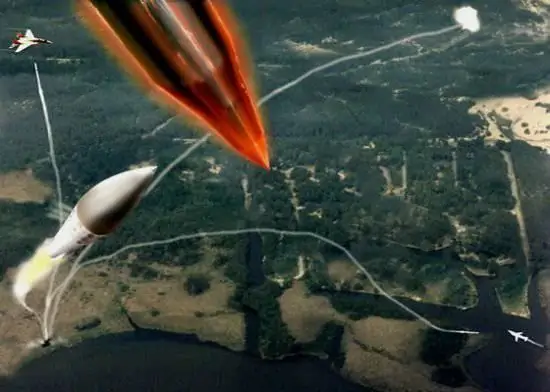- Author Matthew Elmers [email protected].
- Public 2023-12-16 21:49.
- Last modified 2025-01-24 09:17.

The program for the development of the medium-range anti-aircraft missile system MEADS (Medium Extended Air Defense System), jointly implemented by the United States, Germany and Italy, has successfully passed the stage of protecting the working project. The project was found to meet all the requirements.
Steve Barnoske, President of MEADS International, said the draft defense process lasted two years and culminated in August with a review of the overall system design. Completed two days ahead of schedule, the review included an assessment of 47 individual program elements, including hardware, software and lifecycle support.
The results of the review will be sent to the three countries participating in the program in the coming months, after which a decision will be made on its further implementation.
According to the basic concept, the MEADS air defense system is a next-generation mobile air defense / missile defense system, which is intended to replace the Patriot air defense system in the USA, Nike Hercules in Italy, and Hawk and Patriot in Germany.
The system is being developed by the Orlando (USA) -based joint venture MEADS International, which includes Italy's MBDA, Germany's LFK and America's Lockheed Martin. The development, production and support of the air defense system is managed by the NATO organization NAMEADSMA (NATO Medium Extended Air Defense System Design and Development, Production and Logistics Management Agency).
According to NAMEADSMA CEO Gregory Kee, despite the fact that the Memorandum of Understanding on the development of MEADS provides for the possibility of withdrawal of the participating countries from the project, he believes that this will not happen.
In particular, a study recently conducted in the interests of the German Air Force to analyze alternative options for purchasing air defense / missile defense systems (for example, the Patriot air defense system) led to the decision to continue participating in the MEADS program.
Earlier this year, the developers provided NAMEADSMA with an estimate of the cost of the full operational cycle of the system, which was positively assessed by the participating countries. Costs under the program may amount to $ 19 billion.
At the same time, in June this year, when discussing the draft US defense budget for FY11. The Senate Armed Forces Commission (SASC) expressed concern about the cost of the MEADS program, which exceeds the estimate by $ 1 billion and is being implemented with a delay of 18 months. The Commission recommended that the US Department of Defense stop funding the development of MEADS in the event that the program does not pass the stage of defending the working draft. In a response from US Secretary of Defense Robert Gates, sent to the commission, it was reported that the program schedule had been agreed, and the cost of development, production and deployment of MEADS had been estimated. Currently, the US is financing 58.3% of the program's costs. Germany and Italy provide 25.0% and 16.7%, respectively.
Conceptual development of the new air defense system began in October 1996. In early 1999, a $ 300 million contract was signed with a group of companies headed by Lockheed Martin to develop a prototype of the MEADS air defense system. In September 2004, NAMEADSMA signed contracts with MEADS International worth 2 billion dollars and 1.4 billion euros (1.8 billion dollars) for the implementation of the research and development phase of the MEADS air defense missile system.
According to the requirements of the agreement, in order to conduct the tests, MEADS International must supply 6 points of combat command, control, communication, computerization and intelligence BMC4I (Battle Management Command, Control, Communications, Computers and Intelligence), 4 launchers, 1 TPM, 3 circular review, 3 multifunctional fire control radars and 20 anti-aircraft guided missiles (SAM) PAC-3 MSE (Missile Segment Enhancement).
Delivery of the first test samples will begin before the end of this year, when the BMC4I for MEADS arrives at Pratica di Mare AFB (near Rome, Italy) for testing. The launcher and multifunctional radar will be handed over in 2011. Testing of the radar station with a circular view is planned to be carried out in the United States.
The first fire tests of the MEADS complex are planned to be carried out in 2012 at the White Sands test site (New Mexico). The final phase of testing involves testing the capabilities of the system to intercept various simulated threats. The final tests will be carried out at a proving ground in the Pacific Ocean as part of a program that will last until 2015. Germany and Italy are not planning to conduct independent tests.
The final number of systems to be purchased has not yet been determined. According to preliminary plans, the United States should purchase 48 MEADS air defense systems, Germany - 24 units. and Italy - 9 units. Currently, negotiations on this issue are underway between representatives of the development companies and partner countries.






